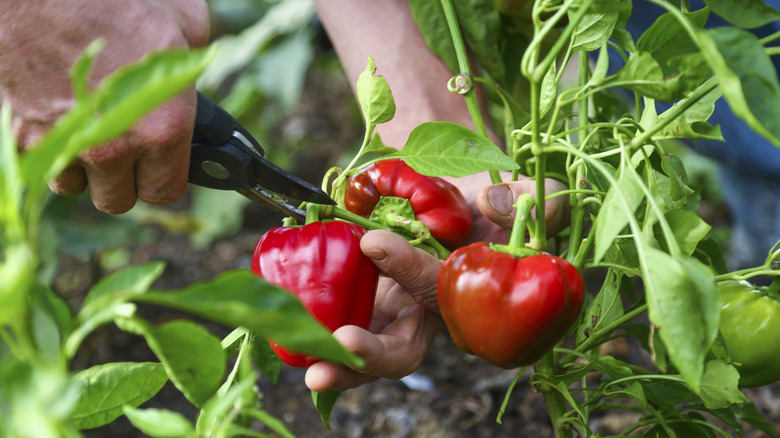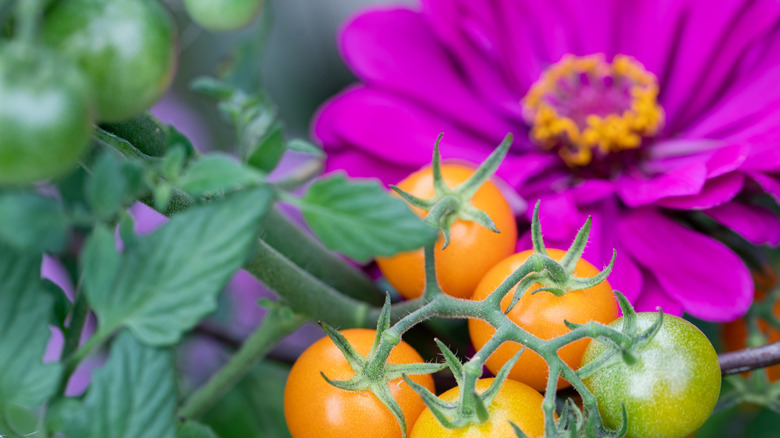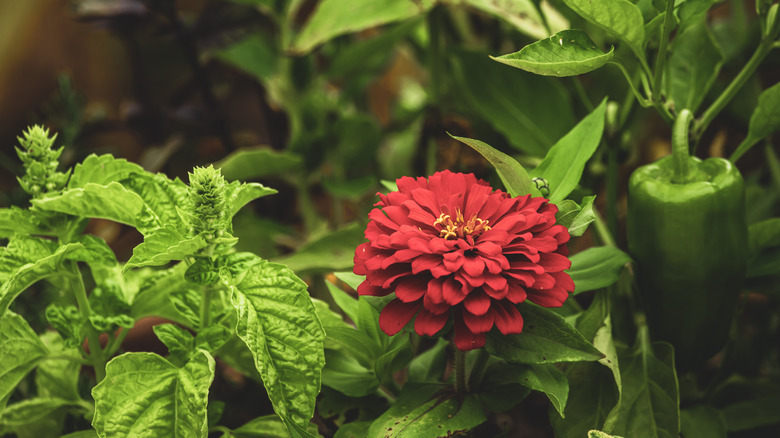The Popular Garden Flower That Helps Your Garden Peppers Multiply & How
Growing an abundant and vibrant garden takes some careful curation and consideration. Zinnias have long been a garden staple as they attract lots of butterflies and pollinators. However, aside from their innate beauty, they also offer the added benefit of helping to pollinate your veggie crops! More specifically, zinnias and peppers positively affect one another when planted together. This beneficial dynamic is known as companion planting, and it's one of the best ways to ensure a healthy, thriving garden. With gorgeous blooms, zinnias add both a functional and exquisite element to your garden. These semitropical flowers will bring life and biodiversity to your garden's ecosystem and are essential to consider when planning your next pepper crop!
Additionally, it's super easy to grow and care for zinnias in your garden. Zinnias and peppers have a unique relationship, and many sources show that, when planted together, zinnias help to increase pepper yields. Partially, this is because zinnias are nectar-filled flowers that attract many beneficial insects that help pollinate pepper flowers, inevitably leading to more peppers! Strategically planting your zinnias can help maximize your garden's potential and increase your yields.
What is companion planting?
Companion planting is a term that describes grouping plants together that thrive alongside one another. While companion planting refers to plants that excel when grown close to one another, it is also important to note that some plant pairs should not grow next to each other and will compete for nutrients or stunt one another's growth. However, while there is not much scientific evidence supporting companion planting couplings, this knowledge is more anecdotal and comes from Indigenous land ways and stewardship.
The "Three Sisters" is our first modern-day reference for companion planting, and it consists of planting beans, corn, and squash together. The corn provides a natural trellis for the beans, and in return, the beans offer high amounts of nitrogen in the soil for the squash and corn to feed off of. Another benefit of companion planting is that you have different root systems throughout the garden, which can help with soil compaction and nutrient release and uptake. Regarding zinnias, their benefit above ground helps increase yields because the vibrant flowers attract all kinds of pollinators, like the endangered monarch butterfly.
How do zinnias help increase pepper yields?
Since pepper plants tend to have smaller flowers, zinnias do an excellent job attracting pollinators, which invariably pollinate your pepper plants. There is seemingly no end to the number of spicy peppers you can grow in your garden, and the same goes for sweet peppers! Furthermore, to get a significant pepper harvest, you want to attract as many pollinators as possible by planting an abundance of flowering plants– like the zinnia! Zinnias make an excellent companion plant with peppers because they do not compete for nutrients and attract all sorts of beneficial insects and pollinators. Both butterflies and bees are big fans of zinnias, and other native pollinators often join in on the nectar-filled fun!
Zinnias will help you increase your pepper yields and boost your overall garden yields due to the sheer number of pollinators they naturally attract. You want to interplant your zinnias with your pepper plants and around the perimeter of your garden beds. This will attract more pollinators, add a divinely beautiful element to your garden beds, and multiply your pepper yields! Plus, one of the coolest things about zinnias is that you can harvest zinnia seeds for an endless supply of zinnia magic in your garden. Another added benefit is that they make exquisite cut flowers for bouquets, so you can bring a pop of color straight from the garden into your home!


